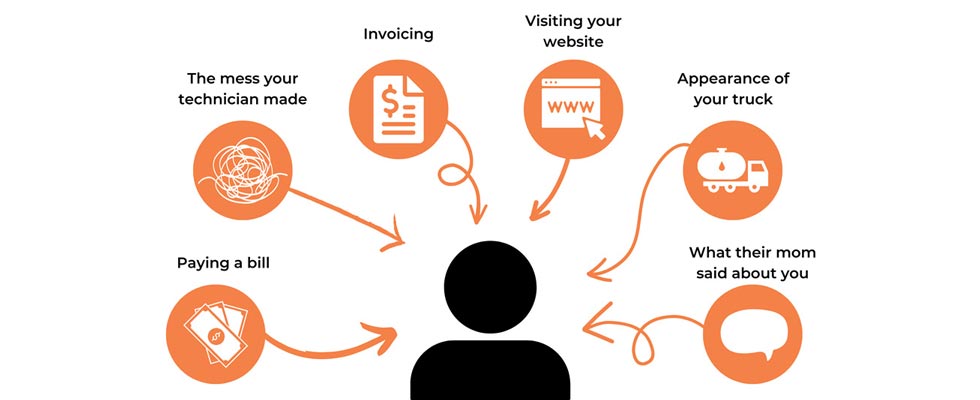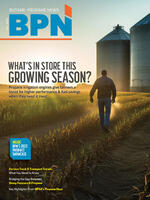
Constant fire drills because of unhappy customers. Always managing to squeaky wheels. Being able to name your top five “troublemaker” customers off the top of your head. Do any of these scenarios sound familiar?
It’s your business and you should know your customers better than anyone. But do you know who your most profitable customers are? Do you define how those customers’ interactions with your business are different than your troublemakers? This is where customer segmentation becomes a powerful tool.
Know Your Customer
Segmentation, at its core, starts with knowing your customers and the value they bring to your business. Customer segmentation involves dividing a company’s customer base into distinct groups based on specific characteristics or behaviors. By identifying and understanding different customer segments, companies can tailor their marketing strategies, product offerings and customer interactions to better meet the unique needs and preferences of each segment. This approach allows for more targeted and personalized engagement, leading to increased customer satisfaction and loyalty.
Marketing teams use segmentation to target customers with similar demographics, but segmentation is not limited to marketing processes. In fact, you are already segmenting in some capacity, with delivery route calculations and will-call versus automatic processes helping you define various customer segments. However, most businesses are not optimizing the customer journey to improve engagement based on segments.
Diving deep into customer metrics — such as total customer lifetime value (CLV) — helps businesses set customer expectations and define the different levels of service that each identified group of customers will receive. It also helps the internal team understand where to focus and prioritize their time. Keep in mind that 20% of your customers are high-CLV and make up 80% of your profits. You need the low-CLV majority, but you can’t afford to lose the high-CLV minority either.
How can fuel delivery companies optimize for their 20%? Perhaps high-value customers get more personalized or prioritized levels of service. While the other segments would still receive exceptional service, their experience would include more automated self-service. Getting started with your customer segmentation might include asking these questions:
- Who are your highest-value customers (your 20%)?
- What do they have in common?
- What promises do you need to make to those high CLV customers?
- What promises will you keep to all of your customers?
For all of your customers, you’re offering promises that you need to keep, but those promises will be different based on the customer segment. In addition, optimization plans and segments will look different from business to business. But the overarching theme — that your customers, their fuel needs and their expectations will vary greatly — is the same across the entire industry. Examine your business and customers and decide how you can bring additional value to the segments you define.
Driving Loyalty & Profits
According to Forbes, capturing new customers is seven times more costly than selling to the customers you already have. In addition, over 80% of customers are willing to pay a premium price for a better customer experience. This is where customer segmentation becomes powerful — through a deeper understanding of your customer base, you can drive loyalty and increase customer lifetime value. Here’s how:
- Personalize experiences — Knowing customers’ preferences, buying habits and pain points enables you to deliver targeted messaging, relevant promotions and customized interactions. This level of personalization enhances the customer experience and makes customers feel valued, ultimately driving loyalty.
- Tailor offerings — Understanding the unique needs and preferences of different customer groups enables you to create tailored offerings and services that cater to each segment’s specific requirements. By providing relevant and valuable solutions, you increase customer satisfaction, loyalty and the likelihood of repeat business.
- Communicate effectively — Communicate using the most appropriate channels and messaging. For instance, younger customers may prefer social media and digital channels, while older customers may prefer traditional communication methods. By aligning your communication strategies with each segment, you can effectively engage with them, strengthen relationships and drive loyalty.
- Optimize the customer journey — Understanding how customers move through the various stages of their purchasing process is critical to driving loyalty and profitability. Customer segmentation helps you identify touchpoints, decision-making processes and potential barriers at each stage. By mapping out the customer journey for each segment, you can optimize interactions, remove obstacles and create seamless experiences that result in higher customer satisfaction and loyalty.
- Deploy target marketing and retention strategies — Focusing your efforts on the most profitable segments, you can develop targeted marketing campaigns and retention strategies that yield higher returns on investment. This allows for stronger connections with your most valuable customers, reducing churn and driving sustainable growth.
Customer segmentation is a powerful strategy that intersects with customer experience and the customer journey to drive loyalty. Embracing customer segmentation as part of your business strategy will enable you to build long-lasting relationships with your customers and achieve sustainable success in the fuel retail industry.
Know Your Technology
A technology stack is made up of all the technical systems used to run your business. Those systems can be categorized into different groups depending on which users interact with the software and what the solutions do. Unfortunately, many fuel delivery companies have tech stacks that look like a cobbled, Frankenstein monster of sales, marketing, front- and back-office, and IT software.
Consider how your customers travel through this maze of systems when doing business with your organization. Do customers have to repeat themselves? Every time someone calls your office to ask about an upcoming delivery, does your customer service team have to dig through two or three systems to give them an update?
Optimizing the customer experience offered by your fuel delivery company requires an evaluation of the technology you’re using — and the tools you need to adopt. Internal systems, such as a customer relationship management tool, are just as important as external ones, such as self-service portals and your company website.
The experience for customers and team members alike should be a seamless one. If you are looking to evaluate what systems you need, consider a few questions:
- What systems do we access to give customers information?
- How confident are you in the results and data that a system provides?
- Does a particular system limit your ability to provide different experiences to customers?
The Case for Change
The world is becoming both larger and smaller at the same time. Your customers have a tremendous number of choices and decisions to make every day. By knowing what matters to each of your customers, segmenting the experiences you want to offer and leveraging technology, you can make those choices much easier.
All it takes is putting a simple, six-step process in place:
1. Segment Your Customer Base
What is your total customer value per customer? What matters to different segments? Dive into the details. Your systems should make this a relatively easy task if they are connected.
2. Determine Your Promises
Breaking down your customer segments, what promises are you making to each segment? Remember, it’s not a matter of lesser service, just a different service.
3. Create the Plan
Where do you want to be and what do you need to get there? New marketing technology that automates the onboarding process? Scripts for your customer service representatives when they quote business? Create a strategic plan that leverages your best customers with your best customer experience offering.
4. Get Buy-In
Every single employee has the power to influence the customer experience and customer journey. Get your team on board. Educate them and give them the tools they need to be successful.
5. Partner as Necessary
Let’s face it, you might not have everything you need in-house. Whether it’s a new website, an updated customer portal or updating your mail-out flyers, find partners who are amazing at what they do and leverage their expertise.
6. Execute
It’s a matter of getting started and incorporating something new. By combining what you do best with new technology and structure, you can take advantage of new opportunities.
The reality is, there are hundreds of ways you could improve your customer experience. There are countless tools, training seminars and business growth opportunities that can continue transforming how you serve customers. But none will be more important than keeping the needs and feelings of your prospects and customers top of mind. Anticipate what they want and provide for them to create the magical experience that encourages customers to come back time and time again.


